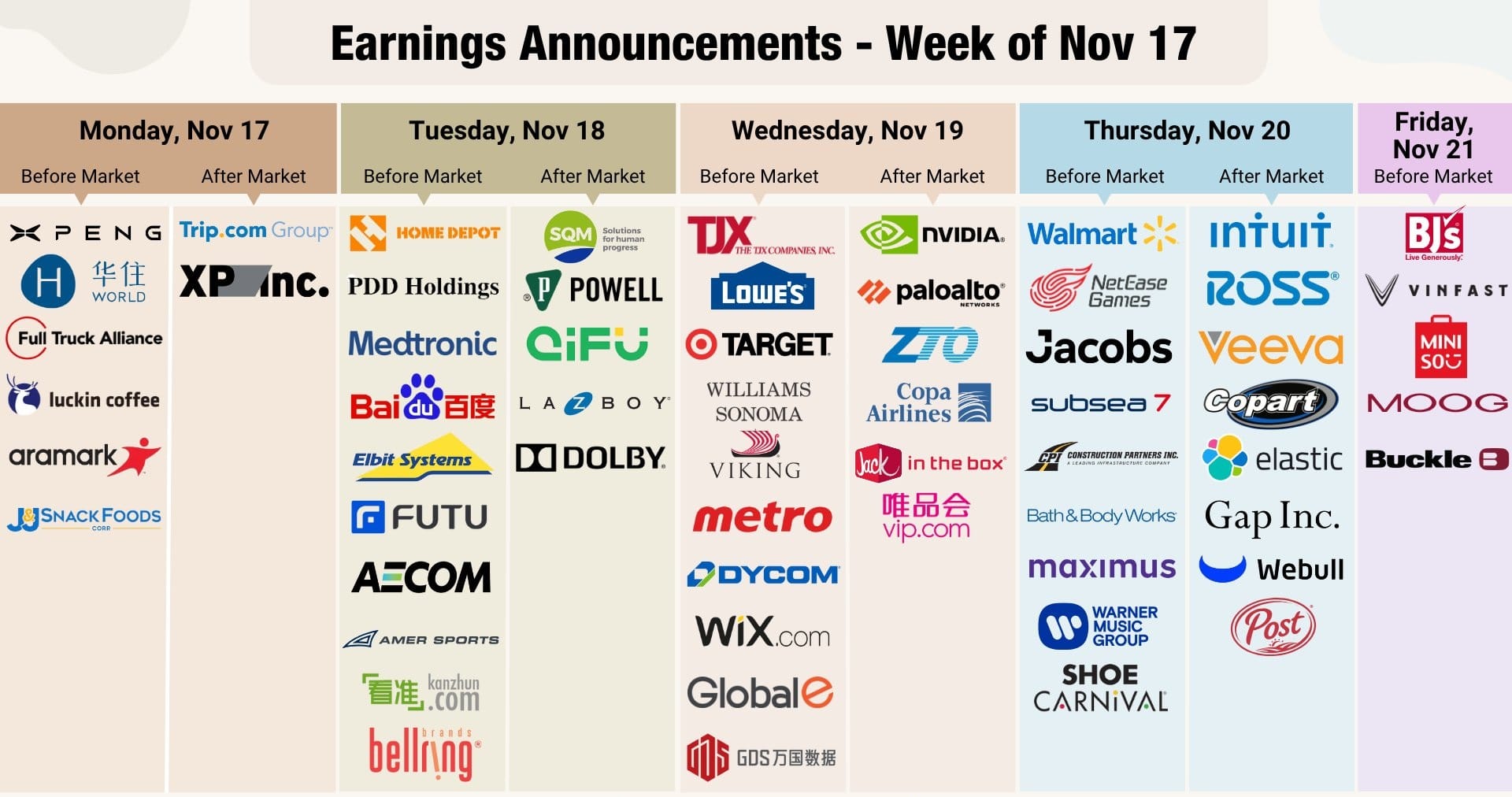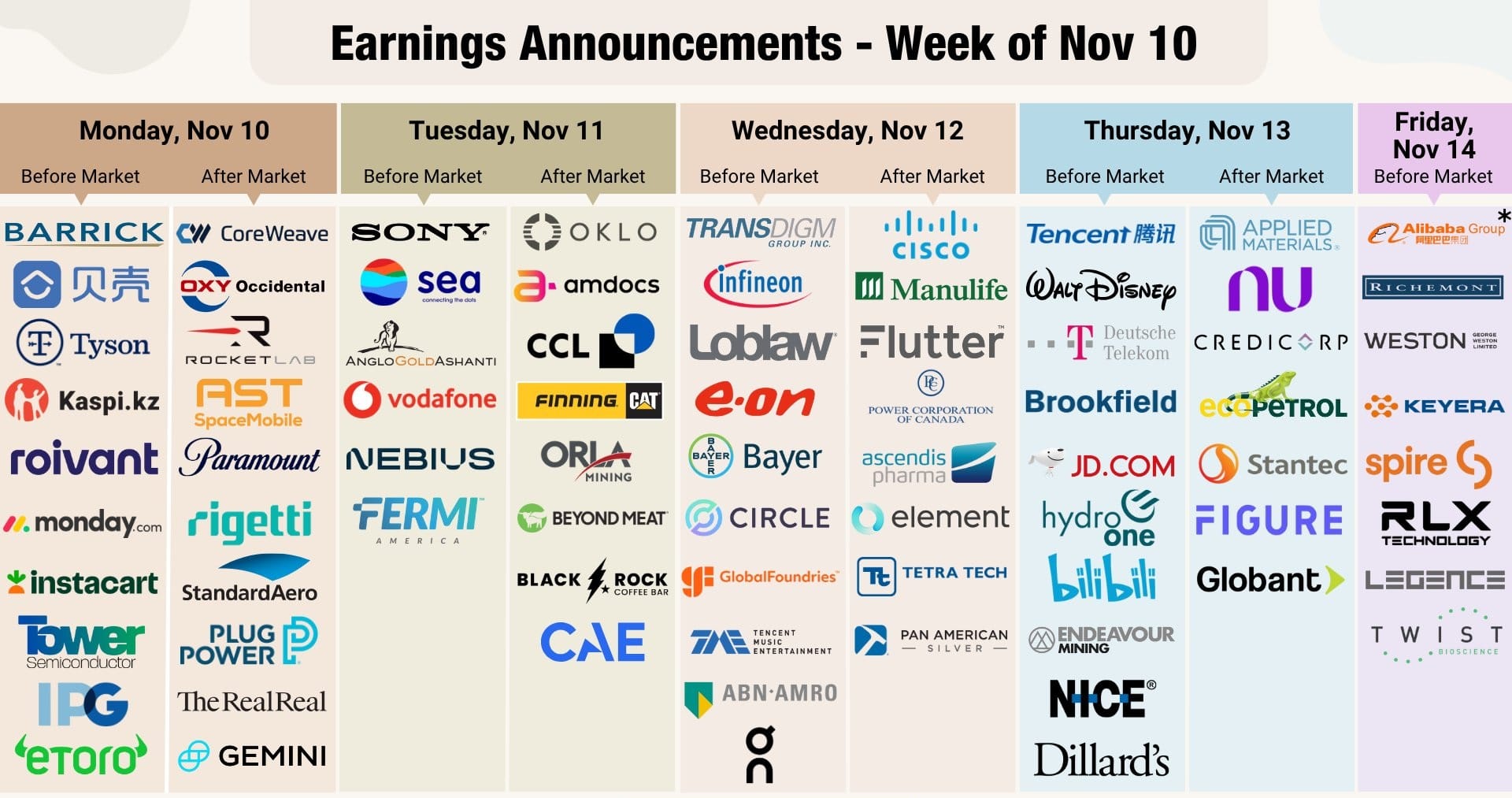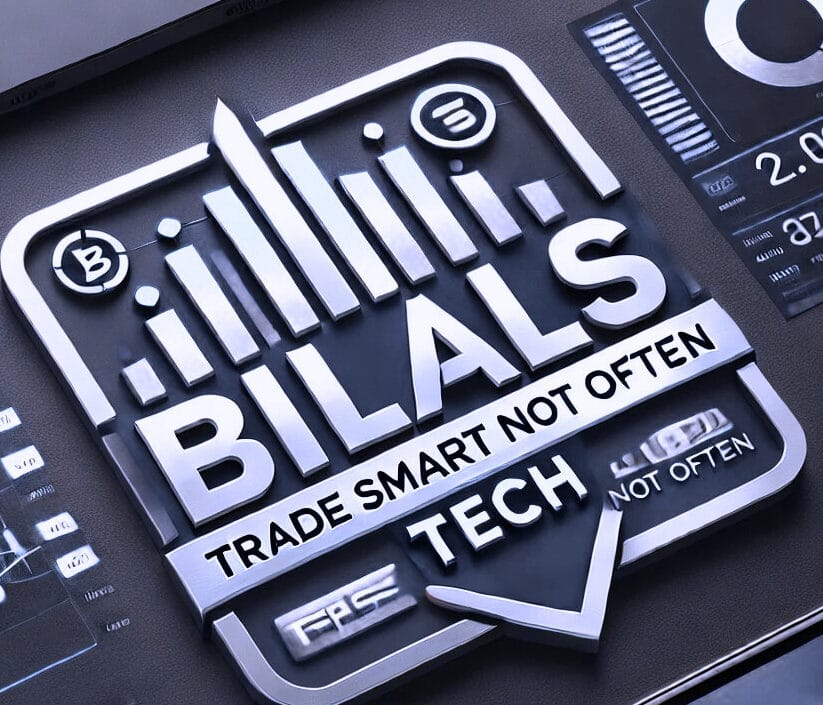North America News
US Stocks Sink But Avoid Worst-Case as Tariff Chaos Unfolds
Equity markets closed sharply lower, but managed to avoid full-blown collapse thanks to late-session comments from Trump.
- S&P 500: -3.5%
- Nasdaq Composite: -4.3%
- Dow Jones: -2.5%
- Russell 2000: -5.2%
The March budget showed a $160.5B deficit, bringing the mid-year total to $1.31 trillion, second only to FY21’s pandemic peak.
Stocks bounced from a midday low after Trump hinted at removing the 10% blanket tariffs for some countries. But sentiment remains fragile.
Strong Demand for 30-Year Bonds in Latest Treasury Auction
The U.S. Treasury’s 30-year bond auction was well received:
- Yield: 4.813%, below the WI (when-issued) level of 4.839%
- Bid-to-cover ratio: 2.43, indicating solid demand
- Indirect bidders (often foreign buyers): 61.88%
- Direct bidders: 25.82%
- Primary dealers: just 12.3%
The results suggest renewed appetite for long-dated U.S. debt, possibly as a hedge against further market volatility or prolonged trade instability.
US March Budget Deficit Shrinks to $161B, Still Massive YTD Shortfall
The U.S. federal government ran a $161.0 billion budget deficit in March, narrower than the $236.6 billion expected and well below the prior $307.0 billion gap.
- Receipts: $368 billion, up from $332 billion in March 2024
- Outlays: $528 billion, down from $569 billion a year ago
- Customs duties: $8.75 billion in March
However, the fiscal year-to-date (FY25) deficit has already reached $1.307 trillion, compared to $1.065 trillion at this point last year—marking the second-largest H1 shortfall in history behind only the COVID-driven FY21.

US March Core CPI Softens to 2.8% YoY, Misses Forecast
Inflation data for March shows a continued cooling trend. Headline CPI rose 2.4% YoY, under the 2.6% forecast, and fell 0.1% month-on-month, surprising markets expecting a slight gain.
- Core CPI YoY came in at 2.8%, below the 3.0% estimate and marking the lowest reading since 2021.
- Core CPI MoM rose just 0.1%, matching expectations.
- Core services inflation softened: ex-shelter +0.1%, and ex-rent/OER +0.095%.
The data provides breathing room for the Fed, although other comments from officials suggest they remain cautious in the face of tariff-related inflation risks.

US Jobless Claims Hold Steady at 223K, Continuing Claims Fall
Initial jobless claims came in at 223,000 for the week ending April 6, matching market expectations. This is a slight increase from 219,000 the previous week.
- 4-week moving average for initial claims remained flat at 223,000.
- Continuing claims fell to 1.850 million, beating the expected 1.882 million and revised down from 1.893 million prior.
- The 4-week average for continuing claims fell slightly to 1,867,750.
Despite market volatility and trade war developments, labor market data remains stable, with no major signs of deterioration.


Trump Administration Considers Delisting Chinese Firms from US Exchanges – Fox Biz
According to Fox Business, the Trump administration is actively weighing the delisting of Chinese firms from U.S. exchanges.
- Sources say incoming SEC Chair Paul Atkins may prioritize this.
- The move would leverage laws allowing delisting for non-compliance with audit transparency or links to the Chinese state.
- “Golden shares” giving Beijing control over firms are a particular concern in Congress.
Delisting could hit sentiment hard, but enforcement could be difficult as many foreign ETFs and funds hold Chinese exposure.
Trump: We’ll Have Clarity on Tariffs in 90 Days, China Deal Close
President Donald Trump told reporters that a trade resolution is moving closer, and a final decision on tariffs will come in the next 90 days.
- Says he’s “not looking at exemptions” for U.S. firms for now, but might consider it.
- “If we can’t make a deal, tariffs go back to full level,” he warned.
- Hinted that money from tariffs could be used to pay down national debt.
- “We’re very close to a first deal,” he added.
Trump said the recent pause is aimed at rewarding countries that did not retaliate, and that he still believes a “great deal” with China is achievable.
Fed’s Goolsbee: The Fed timetable is not the market timetable
- Comments from the Chicago Fed President
- Our goal is to find the through-line, not jump to conclusions
- The hard data on the economy looks pretty good
- Current tariffs are huge
- Keeping inflation expectations stable is critical for the Fed
- The bar for a Fed policy change is now pretty high
- Fed should keep all options on the table
- Current tariffs will drive up inflation near term, hurt growth
- Current tariffs are higher than most scenarios even with Trump’s pause
- Says he prefers market-based inflation data compared to surveys
Fed’s Schmid: Won’t Gamble on Theory That Tariff Inflation Is Temporary
Cleveland Fed official Mark Schmid struck a cautious tone on tariff-related inflation:
- “I take little solace in the idea that tariff inflation is just a one-off.”
- Said economic uncertainty has risen since tariff announcements.
- Warned against putting the Fed’s credibility at risk by underestimating inflation persistence.
Schmid’s comments, made before the latest CPI data or tariff pauses, underline the Fed’s hesitation to assume a soft inflationary impact from trade policy.
Fed’s Bowman: Growth is solid but is slowing
- Comments from the Fed Governor
- Inflation came down, the CPI report showed
- Watching to see how evolving policies affect economy
- Unclear how tariffs affect economy
- Effect on industry unclear
Fed’s Logan: Important to keep tariff-related price rises from fostering inflation
- Comments from Logan
- For now, stance of Fed policy is well positioned
- Higher-than-expected tariffs would very likely raise both unemployment and inflation
- Sustained burst of inflation could lead to rise in inflation expectations
- Inflation persistence will depend on how quickly companies pass through cost increases, and if long-term inflation expectations remain well anchored
WH Hassett: The bond market may have contributed to the tariff decision
- Comments from the White House NEC director
- The bond market may have contributed to the tariff decision.
- But did not cause a panic move.
- We have set up a process so that tariff deals can be orderly.
- Conversations on China have not begun yet.
- Tariff revenue is expected to help reduce the deficit and help bond markets.
- There’s a big inventory of deals that are right close to the finish line.
- Two trade deals are almost closed as of last week.
- Asked if tariffs are pemanent, Hassett replied “everyone expects 10% tariffs to be the baseline”.
- “Extraordinary” deal needed to go below 10%.
- Will present list of deal priorities to Trump on Thursday.
- Have offers from 15 countries.
- Expect a lot of movement with world leaders in the next 3-4 weeks.
- Trump never had any other intent than getting people to the table.
Goldman Sachs Cancels Recession Forecast Following Trump Tariff Pause
Goldman Sachs walked back its recent recession call:
“Prior to President Trump’s announcement, we had shifted to a recession baseline due to the newly enacted tariffs. We are now reverting to our previous non-recession baseline forecast.”
The bank had placed the probability of a U.S. recession at 65% earlier in the week but now sees reduced risk. Goldman notes that while most tariffs may remain in place for now, the decision to pause escalation significantly softens downside risks.
Fed’s Kashkari: Tariff Uncertainty Could Trigger Downturn
Minneapolis Fed President Neel Kashkari told CBS:
- Tariffs could lead to higher inflation if they persist.
- The 90-day pause may reduce short-term inflation pressures.
- “Things have changed dramatically this afternoon.”
- Uncertainty is already prompting reduced hiring and could lead to a broader economic decline.
- He reiterated that the bar to cutting rates remains high.
Fed’s Hammack: Markets Are Strained but Functional
Cleveland Fed President Beth Hammack commented:
- Financial markets are “strained but functioning.”
- The Fed stands ready to intervene in money markets if necessary.
- She supports a wait-and-see approach on rates.
- The Fed is modestly restrictive for now and is not inclined to ease prematurely.
- Uncertainty around removing Supplementary Leverage Ratio (SLR) constraints still exists, and she’s skeptical about their impact on risk capacity.
Canada February Building Permits Rise Sharply, Beating Expectations
Canadian building permits rose 2.9% in February, beating expectations for a 0.5% decline. This marks a strong rebound after a downward revision to -4.3% in January (initially reported as -3.2%).
- Non-residential permits surged 15.3%, helping to offset weakness in housing.
- Residential permits fell 2.9%, indicating ongoing softness in the residential construction market.
The numbers suggest underlying resilience in Canada’s construction sector despite macro headwinds, with strength concentrated in commercial and institutional development.

Canada PM Carney: Tariff Pause is a Welcome Reprieve
Canadian Prime Minister Mark Carney called President Trump’s tariff pause a “welcome reprieve for the global economy.” He emphasized that bilateral negotiations offer an opportunity to restructure global trade systems in a more sustainable and cooperative direction.
Commodities News
Gold Hits Record Highs as US-China Trade War Escalates
Gold soared to a new all-time high of $3,175/oz on Thursday, rallying on safe-haven flows as the US-China tariff conflict deepens.
- Current price: ~$3,160, holding onto most of the day’s gains.
- The rally was fueled by:
- Reintroduction of 125% tariffs on China (actually 145% when including the 20% fentanyl levy).
- Retaliatory 84% tariffs from Beijing.
- A weakening USD and plunging stock markets.
Combined with a surprisingly soft March CPI (+2.4% headline, +2.8% core), markets now see the Fed with more room to stay on hold — or even ease policy — if trade risks deepen.
WTI Crude Settles at $60.07, Retreats After Testing Key Resistance
WTI crude oil futures fell $2.28, or 3.66%, settling at $60.07 per barrel. The session ranged between $58.76 and $63.34.
- The intraday high tested the lower bound of a resistance zone at $63.61–$65.29, but failed to break through.
- The 38.2% retracement of the 2025 decline sits at $64.92, a level bulls need to reclaim.
Sellers remain in control below that resistance band, but any sustained move above $65 would shift momentum back toward the upside.

Copper Rallies on Tariff Pause, But China Risks Keep Lid on Gains – ING
Copper prices rebounded following Trump’s 90-day pause on tariffs for most countries, though China’s 125% tariff rate remains a major risk factor, ING said in a client note.
- ING analysts say hopes for Beijing stimulus are supporting sentiment.
- Still, the trade war remains a drag: “A prolonged US-China conflict would sap consumer confidence and metals demand,” they warned.
Despite the rebound, the tone is cautious — copper may stay rangebound without clear stimulus or trade resolution.
TTF Gas Prices Plunge 7% Amid Heavy Fund Selling – ING
European benchmark TTF natural gas prices fell over 7%, hit by heavy fund liquidations, ING said in its latest update.
- Funds dumped 19.7 TWh in the latest reporting week, reducing their net long to the smallest since May 2023.
- Tariff pause could boost sentiment in the short term, but supply-side fragility remains.
The market remains wary, with positioning suggesting limited confidence in a sustained upside move.
Gold Continues to Shine as US-China Tariff War Intensifies
Gold is up another 1.3%, now trading above $3,100 in early European hours, extending its rebound that began yesterday. While Trump’s 90-day pause on reciprocal tariffs eased some global trade tensions temporarily, the renewed focus on direct US-China hostilities is keeping gold in demand.
Despite the temporary calm, markets are bracing for more volatility. China’s decision to devalue the yuan adds another layer of uncertainty, reinforcing gold’s appeal as a hedge against currency risk and geopolitical tension. Many traders had been waiting for a technical pullback from all-time highs to re-enter the market—and this week’s correction delivered that.
There’s also fundamental support: central bank purchases remain strong, particularly in Asia, and ETF demand may be lagging price, suggesting there could still be room for retail and institutional flows to catch up. With inflation risks, a potential currency war, and persistent macro uncertainty, gold remains one of the few assets with a strong bid across multiple scenarios.
Crude Oil Rallies into Resistance, Then Pulls Back — What Now?
Oil markets surged following the tariff pause, with crude futures jumping more than 10% yesterday, briefly touching a resistance zone around $62–$64 before retreating.
The short-term relief came as global growth fears momentarily eased. However, sentiment remains cautious due to the continued 125% tariff hike on Chinese goods and a baseline 10% tariff for other trading partners.
Technically, the hourly chart shows price rejecting the key resistance and forming a counter-trendline during the current pullback. Sellers will likely use this structure to fade rallies and look for new lows. Meanwhile, buyers are watching for a clean break above $64, which could trigger another leg higher, with $72 as the next bullish target. For now, oil remains in a tug-of-war between short-term optimism and structural bearishness.
Europe News

German Economic Institutes Cut 2025 Growth Outlook to 0.1%
Germany’s leading economic institutes have slashed their 2025 GDP forecast to 0.1%, down from 0.8% in September. The downgrade reflects ongoing challenges in the manufacturing sector and global trade.
Notably, the new projections do not yet fully incorporate the effects of the latest 10% blanket U.S. tariffs, or the delayed 20% levies expected later. They do, however, account for the existing 25% tariffs on steel and aluminum.
For 2026, the growth outlook remains unchanged at 1.3%, supported by a planned €24 billion fiscal package, which is expected to add 0.5 percentage points to output next year.
UK House Buyer Demand in March Hits Lowest Since September 2023
The RICS House Price Balance slipped to +2 in March (prior +11), the weakest since August 2024. The measure of new buyer enquiries fell sharply to -32, down from -16 in February—its lowest since September 2023.
RICS Chief Economist Simon Rubinsohn said the expiry of the stamp duty break, combined with broader macroeconomic concerns, has led to a renewed downturn in the housing market.
Bank of England Postpones Long-Dated Gilt Auction Amid Market Volatility
The Bank of England has delayed its planned sale of long-dated bonds due to recent market turbulence. Instead, it will auction short-dated gilts on April 14.
- The delay affects a bond auction outlined in the March 21 Q2 sales schedule for the Asset Purchase Facility.
- The BoE intends to reschedule the long-bond sale for the next quarter.
- All other Q2 auction dates remain unchanged.
The move is part of the BoE’s attempt to evenly reduce bond holdings across maturities while managing auction demand in volatile conditions.
BOE’s Breeden: Latest developments have a material impact on economic outlook and risks
- Comment from Breeden
- World has moved on significantly since March MPC meeting
- Very unclear what overall landscape will be for tariffs in medium term
- Impact on inflation from US tariffs not clear cut
ECB’s Villeroy: Trump tariffs pause is less bad news but still bad news
- Remarks by ECB policymaker, Francois Villeroy de Galhau
- Glad that Europe has kept its cool during talks with Trump administration
- There is room for talks in the coming 3 months on tariffs
- Protectionism remains a bad element for the US economy
- Trump policies in recent weeks have eroded confidence in the US dollar
EU remains committed to constructive talks with US on tariffs – von der Leyen
- Remarks by EU president, Ursula von der Leyen
- Trump’s latest decision marks important step to stabilising global economy
- Clear, predictable conditions are essential for trade to function
- EU sticking to its goal of achieving frictionless and mutually beneificial trade
- Have consistently advocated for a zero-for-zero tariffs agreement with the US
EU says will consult with member states before deciding on next steps regarding US tariffs
- A couple of remarks from the European Commission
- Will take necessary time to assess latest developments regarding Trump’s tariffs
- To closely consult with member states and industry before deciding on next steps
EU agrees to pause countermeasures against US tariffs for 90 days
- As confirmed by EU president von der Leyen
- We want to give negotiations a chance
- But if negotiations are not satisfactory, our countermeasures will kick in
- Preparatory work on further countermeasures continues
- All options remain on the table
Asia-Pacific & World News
US-China Tariff Rate Correction: Total Tariff on China is 145%, Not 125%
According to a CNBC report, the true effective tariff rate on Chinese imports has now climbed to 145%, not 125% as previously announced by the White House.
- The White House apparently omitted a 20% fentanyl-related tariff already in place.
- Combined with the new 125% reciprocal rate, the cumulative impact is now 145%.
This misstatement adds confusion as markets try to assess the full impact of U.S. trade measures against China.
WSJ: Xi Would Take Trump’s Call If It Came
A new Wall Street Journal report says Chinese President Xi Jinping is open to a phone call with Trump, though he’s unlikely to initiate it himself.
- Trump earlier said he was waiting for a call from Xi.
- Sources say if Trump reaches out, Xi is prepared to take the call.
This adds a layer of intrigue to ongoing trade talks, which remain tense. It’s a clear game of brinkmanship—each side waiting for the other to blink.
China Reaffirms Its Commitment to Fight Tariff War to the End
In coordinated statements from the Commerce and Foreign Ministries, Beijing doubled down:
- China does not want a trade war, but is prepared to continue it.
- It will take “resolute countermeasures” in response to U.S. actions.
- U.S. “bullying” will be met with further opposition, and China “will not sit back and let its interests be deprived.”
The tone suggests that Beijing sees the conflict as part of a broader geopolitical contest and is unwilling to make concessions under pressure.
China: Trade Position is Clear and Consistent
In remarks from the Commerce Ministry, China reiterated that its stance on trade has not changed. Officials emphasized:
- Dialogue is possible but must be based on mutual respect and equality.
- The use of “pressure, threats, and blackmail” is not acceptable.
- China will “unswervingly handle its own affairs well,” and has full confidence in navigating external challenges.
The message appears aimed at both domestic audiences and international observers, asserting that while China remains open to negotiation, it will not yield to unilateral pressure from Washington.
Goldman Sachs Slashes China GDP Forecasts for 2025 and 2026
Goldman Sachs has revised its China GDP growth forecast for 2025 down to 4.0%, from a previous estimate of 4.5%. For 2026, the projection has also been cut to 3.5%, from 4.0%.
The downgrade follows Trump’s aggressive tariff moves, especially the decision to raise Chinese import duties to 125%. Goldman had already warned that the trade dispute posed downside risks and predicted significant policy easing by Chinese authorities in an attempt to stabilize growth. The bank now sees a steeper deceleration ahead as Chinese exports and investor confidence come under pressure.
China’s Leaders to Meet Thursday to Discuss Stimulus Measures
In response to President Trump’s tariff escalation, China’s top leadership is set to convene on Thursday to consider additional stimulus measures aimed at shoring up the economy. The focus will reportedly be on initiatives to support the property market, lift consumer spending, and promote technological innovation.
Despite some progress in addressing the property sector’s debt overhang, recovery has been slow, contributing to subdued domestic demand. Export performance had been one of the few bright spots for the economy—until now. The recent round of U.S. tariffs threatens to undermine that, prompting policymakers to accelerate economic support efforts.
Chinese Amazon Sellers Warn of Price Hikes and Market Exit Amid U.S. Tariffs
Shenzhen-based exporters selling on Amazon are warning of major disruptions after the U.S. raised tariffs on Chinese goods to 125%. The Shenzhen Cross-Border E-Commerce Association, which represents over 3,000 companies, called the move an “unprecedented blow.”
“This isn’t just a tax issue—it’s a complete shake-up of the cost structure,” said Wang Xin, the association’s chairman. He warned that many sellers may raise prices or exit the U.S. market entirely, potentially leading to widespread closures and job losses in China’s SME sector.
Some sellers are continuing to ship goods, but many are already eyeing alternative markets. Fitch Ratings’ Olu Sonola noted that with capital and intermediate goods making up 43% of Chinese exports to the U.S., American manufacturing could also suffer short-term job losses.
China March CPI -0.1% y/y vs Expected +0.1% — Another Month of Deflation
Latest CPI and PPI figures for March 2025:
- CPI YoY: -0.1% (expected +0.1%, prior -0.7%)
- CPI MoM: -0.4% (expected -0.2%, prior -0.2%)
- PPI YoY: -2.5% (expected -2.3%, prior -2.2%)
The data shows that China is once again in deflation, despite a slight improvement from February. Weak consumer demand and falling producer prices reflect ongoing pressure across the economy, particularly as trade tensions worsen.
WSJ: Xi Jinping Gears Up for Full Economic War with U.S.
The Wall Street Journal reports that Beijing is preparing to unleash a broader range of economic retaliation tools aimed at the U.S., including:
- Export controls on critical materials needed for semiconductors and defense products.
- Regulatory crackdowns designed to intimidate U.S. firms.
- Blacklist expansion to block select American businesses.
- IP pressure —new policies could compel U.S. companies to relinquish intellectual property to maintain market access.
The article underscores Xi Jinping’s readiness to engage in long-term economic warfare with Washington.
The Wall Street Journal: (gated)
China’s Commerce Minister Reiterates Commitment to Retaliate
China’s Commerce Minister reiterated a hardline stance in talks with EU trade chief Maroš Šefčovič. Key remarks:
- China is open to negotiations but will “fight to the end” if the U.S. continues to escalate.
- The so-called “reciprocal tariffs” from the U.S. are a “serious infringement” on international trade norms.
- China remains committed to deepening ties with the EU on trade, investment, and industry.
PBOC sets USD/ CNY mid-point today at 7.2092 (vs. estimate at 7.3484)
- 7.2092 is the weakest, for the CNY, since September 11 2023

RBA Governor Bullock: Too Early to Predict Path for Rates
Reserve Bank of Australia Governor Michele Bullock stated that the central bank is in no rush to change policy, citing the unpredictability of the current global environment:
- The impact of U.S. tariffs is still unclear.
- There will be a period of adjustment and uncertainty as countries recalibrate.
- The RBA remains focused on price stability and full employment.
- While not seeing a 2008-style shock, the bank is monitoring the exchange rate and policy responses from trade partners closely.
Australia is reopening talks about free trade with the European Union
- Negotiations came to zero two years ago and were abandoned.
Australia is preparing for trade talks with the European Union.
- The EU has agreed to revisit negotiations.
- EU Trade Commissioner Maros Sefcovic proposed planning for a new timeline for reopening talks in an hour-long meeting with Australian counterpart Don Farrell via video link on Wednesday evening.
Trade Minister Don Farrell is reopening talks about free trade with the European Union.Credit:Alex Ellinghausen
In contrast, Defence Minister Richard Marles rejected Chinese ambassador to Australia Xiao Qian’s offer to “join hands” with Australia to respond to Trump’s tariffs
- “We’re not about to make common cause with China – that’s not what’s going to happen here”
- Instead, Australia was trying to diversify its trading partners while stabilising its trade relationship with China.
Australian Inflation Expectations Jump to 4.2% in April
The Melbourne Institute’s monthly inflation expectations survey surged to 4.2% in April, up from 3.6% in March. The increase comes as consumers face renewed cost pressures and amid market speculation of coming rate cuts by the Reserve Bank of Australia.
NAB Forecasts 50bp RBA Rate Cut in May, Rates to Fall to 2.6%
National Australia Bank now expects the Reserve Bank of Australia to cut rates by 50bps in May, followed by:
- 25bps in July
- 25bps in August
- 25bps in November
- 25bps in February 2026
This would take the cash rate to 2.6%, down from NAB’s prior forecast of 3.1%. The shift reflects weaker global and domestic outlooks and the fluidity of the U.S. tariff situation.
New Zealand Finance Minister Says RBNZ Has Room to Cut Rates
New Zealand Finance Minister Nicola Willis stated in Parliament that the Reserve Bank has ample room to ease monetary policy further if conditions warrant. Her comments come as Parliament works to select a new RBNZ Governor. The remarks have raised eyebrows as potentially signaling political pressure on central bank independence.
New Zealand PM Luxon to visit the UK this month, trade talks with UK PM Starmer
New Zealand’s Prime Minister Luxon to visit the UK this month.
He’ll engage in trade talks with UK PM Starmer.
ASEAN Nations Say They Won’t Retaliate Against U.S. Tariffs
Southeast Asian countries under the ASEAN umbrella have signaled that they will not implement retaliatory tariffs against the United States, despite being hit with broad 10% duties.
The decision reflects the delicate position these economies are in. Heavily dependent on trade with both the U.S. and China, ASEAN nations—particularly emerging markets like Vietnam, Thailand, and Malaysia—are seeking to avoid alienating either side. While the move may shield them from immediate U.S. backlash, it also highlights their vulnerability in a deepening trade war.
Japan March PPI +0.4% m/m, +4.2% y/y — Both Above Expectations
Data from the Bank of Japan:
- PPI YoY: +4.2% (expected +3.9%, prior +4.0%)
- PPI MoM: +0.4% (expected +0.2%, prior 0.0%)
The Producer Price Index, also known as the Corporate Goods Price Index, continues to climb. This could signal building pipeline inflation pressure, even as the BOJ stays cautious on rate moves.

Kazuyuki Masu, a former CFO of Mitsubishi, nominated to join Bank of Japan policy board
- Will be replacing Toyoaki Nakamura, a former Hitachi executive known for his dovish stance
If approved by parliament, Masu will start his five-year term on July 1, replacing Toyoaki Nakamura, a former Hitachi executive known for his dovish stance on monetary policy. Masu’s appointment maintains the tradition of having a business leader on the nine-member BOJ board, which includes professionals from academia, economics, and government.
Nakamura had opposed the BOJ’s recent interest rate hikes and the end of negative interest rates, citing risks to small and medium-sized businesses. His departure, along with the recent addition of monetary hawk Junko Koeda in March, could shift the board toward a more rate-hike-friendly stance.
The nomination also comes amid global trade tensions, including tariffs imposed by the Trump administration, which have added complexity to the BOJ’s policy decisions. The BOJ has been gradually tightening monetary policy after years of ultra-loose settings, having raised rates to 0.5% in January in pursuit of a stable 2% inflation goal.
Crypto Market Pulse
US Bitcoin Miners Scramble to Import Hardware Ahead of Tariff Spike
Facing rising import tariffs, U.S.-based Bitcoin miners rushed to fly in equipment, with some paying up to $3.5 million per shipment to beat the deadline, according to Blockspace.
- Mining gear costs are expected to rise 22% to 36%, due to tariffs on China, Malaysia, Thailand, Indonesia, and Taiwan.
- The U.S. imported $860 million worth of mining equipment in Q1 2025 alone.
- American miners currently control 38% of global hashrate.
Blockspace notes that these tariffs could cause US hashrate share to drop, and the shift could echo the disruption of China’s 2021 mining ban. While a 90-day tariff pause now applies to 75 countries, China is excluded, leaving miners little relief.
Crypto Market Stabilizes Near $2.6T, Still Lagging Equities’ Surge
The crypto market is steadying, with total capitalization holding near $2.60 trillion, recovering from $2.3 trillion lows earlier this year.
- Bitcoin has reclaimed $80K, but faces resistance at the upper edge of its two-month downtrend.
- Ethereum bounced from $1,400 to $1,600, with resistance at $1,900.
- Market caution persists as capitalisation remains below the rising 200-day moving average (~$2.96 trillion).
News updates:
- Ripple acquired Hidden Road for $1.25B to strengthen the XRP and RLUSD ecosystem.
- Charles Hoskinson called for a “cooperative balance” in DeFi to compete with Web2 giants.
- Web3 developer count has plunged 40% YoY, per Artemis Terminal.

Bitcoin Surges with Risk Assets on Tariff Pause — Is This Just a Bounce?
Bitcoin jumped 12% following Trump’s tariff pause announcement, mimicking the explosive rally in equities and other risk assets. The pause sparked a wave of optimism, as markets took it as a sign that Trump is more interested in resetting global trade structures than escalating toward full-blown economic warfare—though China remains the exception.
BTC bounced sharply off the $73,800 support area and soared toward $83,000, now approaching a long-term trendline that has capped rallies since February. Whether this is a breakout or a fakeout depends on follow-through.
Sellers are likely to defend this trendline aggressively, targeting a move back to $70,000 if price weakens. Buyers will aim for a confirmed breakout that could retest all-time highs. Bitcoin remains closely tied to liquidity conditions, and as such, any extension of the tariff truce could further enhance its appeal as a hedge and high-beta growth asset.

The Day’s Takeaway
Day’s Takeaway: Key Market Trends & Developments
United States: Slowing Inflation, Soaring Deficits, and High-Stakes Trade Politics
- Macro Data:
- March Core CPI eased to +2.8% YoY, below expectations and marking the lowest print since 2021. Headline inflation dropped -0.1% MoM, surprising markets.
- Initial Jobless Claims rose to 223K, matching consensus, with a small uptick in continuing claims.
- March Budget Deficit: $161B vs. $237B expected. Still, the YTD deficit hit $1.31 trillion, the second-largest on record for H1 fiscal year.
- Policy/Politics:
- Trump’s 90-day tariff pause on 75 countries lifted some pressure, but the 125% (actually 145%) tariff on China remains intact, triggering fresh trade war escalation.
- Trump indicated “certainty on tariffs in 90 days” and suggested a deal with China is possible but not imminent.
- The Fed remains cautious, with officials warning that inflation pressures from tariffs could be more persistent than expected. Kashkari and Schmid both reinforced the higher bar for rate cuts. FOMC minutes revealed concerns about investment hesitation and long-run inflation expectations.
- Markets:
- Equities:
- S&P 500 closed down -3.5%, Nasdaq -4.3%, Dow -2.5%, Russell 2000 -5.2%. A rebound mid-day was helped by Trump hinting at selective tariff relief.
- Treasury Auctions:
- 30-year bonds sold with 4.813% yield, slightly below WI, showing strong demand from indirect (international) buyers at 61.88%.
- FedWatch:
- A rate cut in the near term remains unlikely, though easing inflation gives the Fed some flexibility.
- Equities:
Canada: Construction Rebounds, Tariff Chaos Looms
- Building Permits:
- February permits rose +2.9% MoM vs. -0.5% expected. Residential down -2.9%, but non-residential surged +15.3%.
- Leadership & Trade:
- PM Mark Carney welcomed the U.S. tariff pause, calling it “a reprieve for the global economy.”
- Canada remains exposed as a high-volume U.S. trading partner, watching developments closely.
Commodities: Volatility Rules as Trade and Currency Wars Reignite
- Gold:
- Hit a record high of $3,175/oz, settling near $3,160. Safe-haven flows continue as US-China tariffs escalate and the dollar weakens. Central bank demand and currency war fears provide strong support.
- Crude Oil:
- WTI settled at $60.07, down -3.66%, after testing resistance at $63.34. Volatility remains high following prior lows of $55.15.
- Market remains vulnerable to oversupply, with OPEC+ output set to rise next month.
- Copper & Base Metals:
- Copper bounced modestly on tariff pause optimism but faces downside risk from China’s 125% tariff burden. Traders now eye potential Beijing stimulus to stabilize demand.
- TTF Gas (Europe):
- Fell 7% as funds dumped long positions. Market may recover on tariff pause news, but cautious sentiment remains.
Europe: Slashed Growth Forecasts and Fiscal Firefighting
- Germany:
- Economic institutes cut 2025 GDP growth to +0.1% from 0.8%, even before accounting for the full impact of Trump’s tariffs.
- Fiscal support in 2026 expected to provide a modest 0.5% GDP boost.
- UK:
- BoE postponed long-dated bond sale due to “market volatility,” switching to short-dated issuance instead.
- RICS data showed UK homebuyer demand in March at its lowest since Sept 2023; stamp duty threshold changes and macro concerns weigh on sentiment.
- Eurozone Tariff Fallout:
- Sources say ECB now sees double the growth hit from U.S. tariffs than initially estimated (100+ bps vs 50bps).
- European markets sank: Stoxx 600 -3.5%, DAX -3.2%, CAC -3.2%.
Asia: China on Edge, Japan & Australia Feeling Inflation Heat
- China:
- March CPI deflation (-0.1% YoY) and PPI -2.5% confirm weak domestic demand.
- Xi Jinping may take Trump’s call, per WSJ, but no overtures yet.
- Beijing reaffirmed its readiness to “fight to the end” on tariffs and is preparing stimulus measures targeting housing and innovation.
- Commerce Ministry says U.S. “blackmail” won’t work and dialogue must be based on equality.
- Amazon sellers in Shenzhen warn of massive price hikes and exits due to tariffs.
- Goldman Sachs slashed China’s 2025 growth forecast to 4%, with 2026 cut to 3.5%.
- Japan:
- March PPI +4.2% YoY, above expectations, showing upstream inflation in manufacturing.
- Australia:
- Inflation expectations jumped from 3.6% to 4.2% in April.
- NAB expects the RBA to cut 50bps in May, citing tariff pressures and softening global growth.
- RBA Governor Bullock says it’s “too early” to set a rate path amid unpredictable trade conditions.
- New Zealand:
- Finance Minister says RBNZ has ample room to cut rates if needed, possibly putting pressure on incoming governor candidates.
Rest of the World: ASEAN Caught in Crossfire
- Southeast Asia (ASEAN):
- Member states committed not to retaliate against U.S. tariffs, balancing delicate ties with both Washington and Beijing.
- South Africa:
- ZAR hit an all-time low, nearing 20.00/USD. Growth concerns mount amid rising inflation (4.5%) and global recession fears.
Crypto: Stabilizing After Whiplash, But Risks Remain
- Market Cap:
- Stabilized around $2.6 trillion, up from $2.3T, but well below resistance at the 200DMA (~$2.96T).
- Bitcoin:
- Reclaimed $80K after dropping to $74.6K earlier in the week. Now testing trendline resistance near $83K.
- Miners rushing to import rigs ahead of tariff hikes; equipment costs expected to surge 22%–36%.
- Ethereum:
- Weak bounce from $1,400 to $1,600. Still lagging broader market strength.
- Ripple:
- Acquired Hidden Road for $1.25B to expand institutional footprint and RLUSD stablecoin usage.
- Regulatory Watch:
- Trump admin reportedly moving toward delisting Chinese firms from U.S. exchanges, citing audit and security concerns.
- Developer Exodus:
- Artemis Terminal reports a 40% drop in Web3 developers YoY, flagging ecosystem weakness.

















